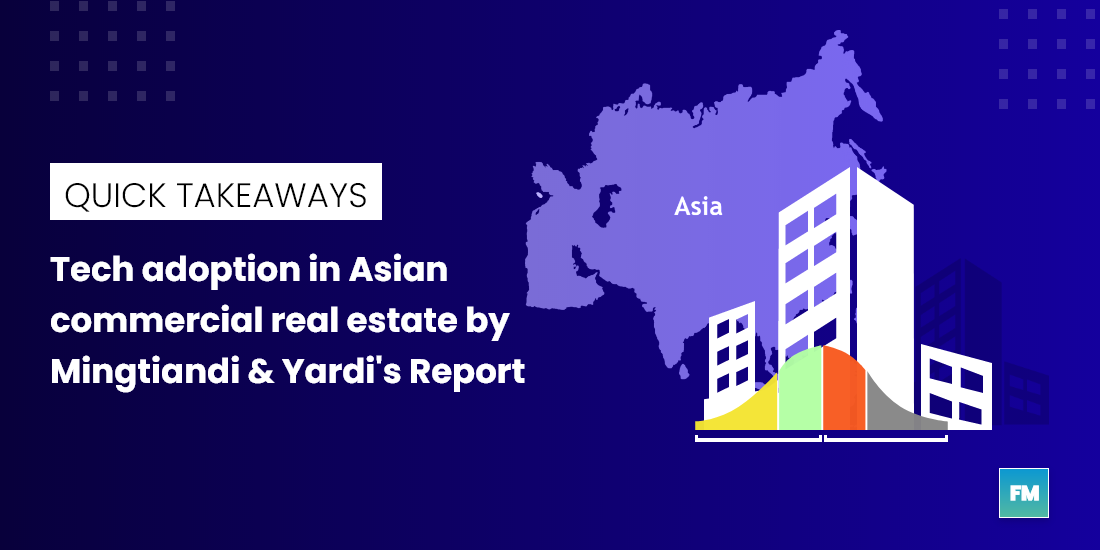Asian commercial real estate market has always been looked at as a testing ground for many Proptech products. Whether it is AI/VR technology, Asset management, big data & Analytics, or property listing application. Wherever it stands on the value chain, whoever supposed to be the end-user – Property owner, facilitator or tenants it is usually tried and tested in the Asian market first and then scaled on global markets like North America and Europe.
I believe there are two reasons why Asian markets are being test-labs for the innovation and growth
1) Scope for development:
While most of the developed countries have limited or relatively low construction and development rates, china and India are outpacing them all.
“Asia is urbanizing at a much faster rate than the rest of the world. We have a much higher level of construction across all of our markets, which means there’s new development – and new developments all have a greater focus on innovation. In Asia, if we don’t have a technology, we simply leapfrog to the next level.” Jonathan Hannam, Co-founder and Managing Partner, Taronga Ventures
2) Demography:
Asian markets being one of the highest population of millennials and increasing disposable per capita income, people are expecting better infrastructures & technology to make life easier.
Evidently, when other developed markets are looking for consolidation, there are numerous proptech companies that are entering Asian markets to test their tech stack.
Although there are growth and innovation, it is still facing its own set of challenges. It is still in the transition phase and would need some radical changes in terms of behavioral and operational practices.
Mingtiandi, an independent Asia-centric real estate intelligence provider and Yardi, a software company came up with the survey report on technology adoption in the Asian real estate industry. Report unravel some of the unexpected trends and barriers and forecast on how the future will look like.
Here are our top picks from the report:
- No more lagging
Asian real estate companies are closing the gap between the western market’s proptech development and its own. While there is a difference of opinion among HK, Singapore and Chinese respondents, 30% of the respondents think that Asia is leading the way in penetration of technologies as compared to western counterparts.
However, being the conventional industry 77% of respondents still think that the real estate industry invests far less in innovation than the automobile, aviation, or other industries.
- Barriers to Tech adoption
Behavioral change is the biggest hurdle CRE companies face when commissioning the new technology or application. 35% of the respondents suggested it takes a lot of resources and development to invest in technology while 19% of them point towards the cost associate with the applications as a bigger barrier.
Not surprisingly most real estate professionals still prefer Excel as the go-to tool for sales, planning, reporting and analytics.
Although Excel is a great tool for number crunching but the trend highlight the underlying fact that most facility management teams haven’t reached the scale or sophistication required for an automated process.
- COVID has accelerated the tech adoption
As seen all over the world, covid has played a catalytic role in tech penetration in the Asian market too. People are planning or making a serious investment in a collaborative system. 41% of the respondents suggested that they are planning to go paperless online operations.
Crises has changed the way people interest in office space, as most of the employees prefer to work from home till everything settles down, companies are investing in video conferencing systems for meeting and enabling sales, etc.
- Way Forward
As the uncertainty in the market is fading out and businesses and industries are showing the sign of getting back on track, companies are strategizing on long term digital transformation roadmap. Technologies that were in the nascent stage a couple of years back now at a peak of adoption.
55% of the respondents think that big data analytics will have a significant impact on the real estate industry in the coming years, while 32% suggested that Business process automation and the Internet of things will see similar growth in the next five years.
Property management systems and investment platforms remain on the top priority for the real estate industry followed by fintech and online market places.
However, one trend that will predominantly remain on the top at least for the next couple of years is customer-centric technology. Whether it is a touchless room booking device or space management application it has to be designed in a way to address the safety and hygiene concern of the tenant or occupant.
It wouldn’t be wrong to say that the Occupant is the biggest driver for the change now and any strategic investment around the technology has to be taken considering his experience in mind.

Leave a Reply